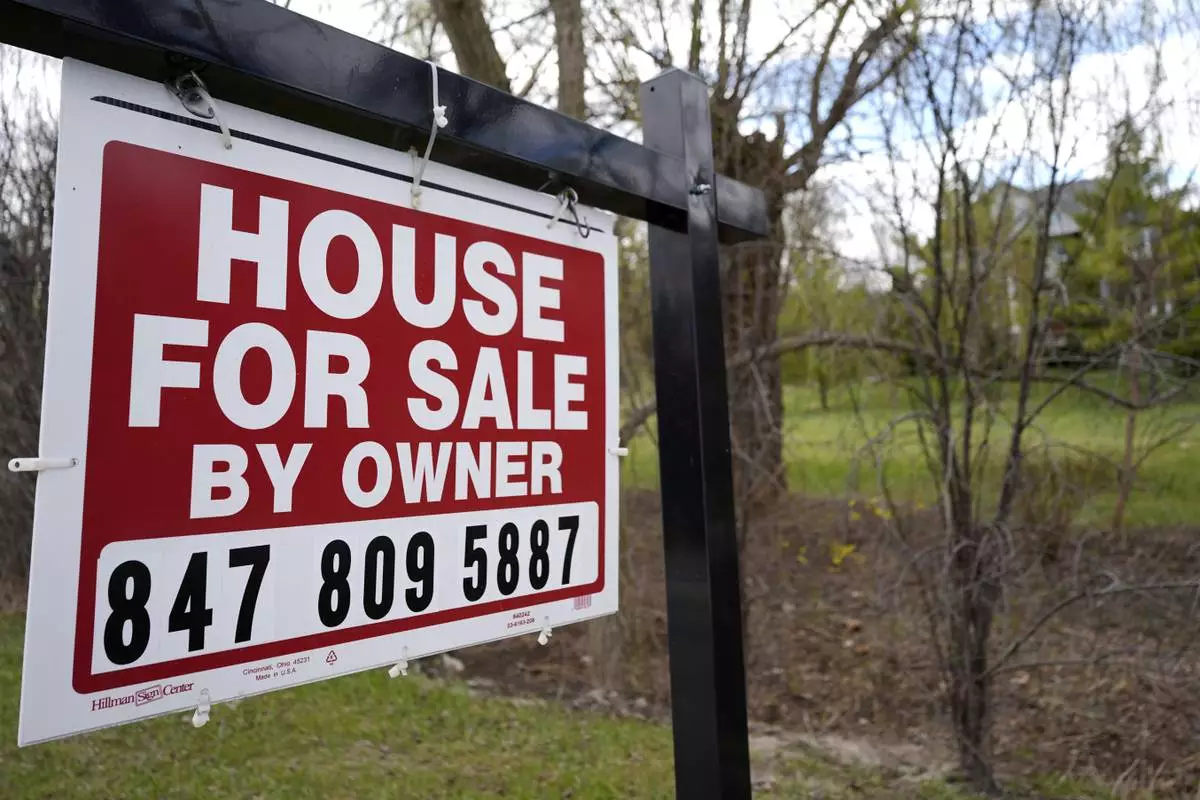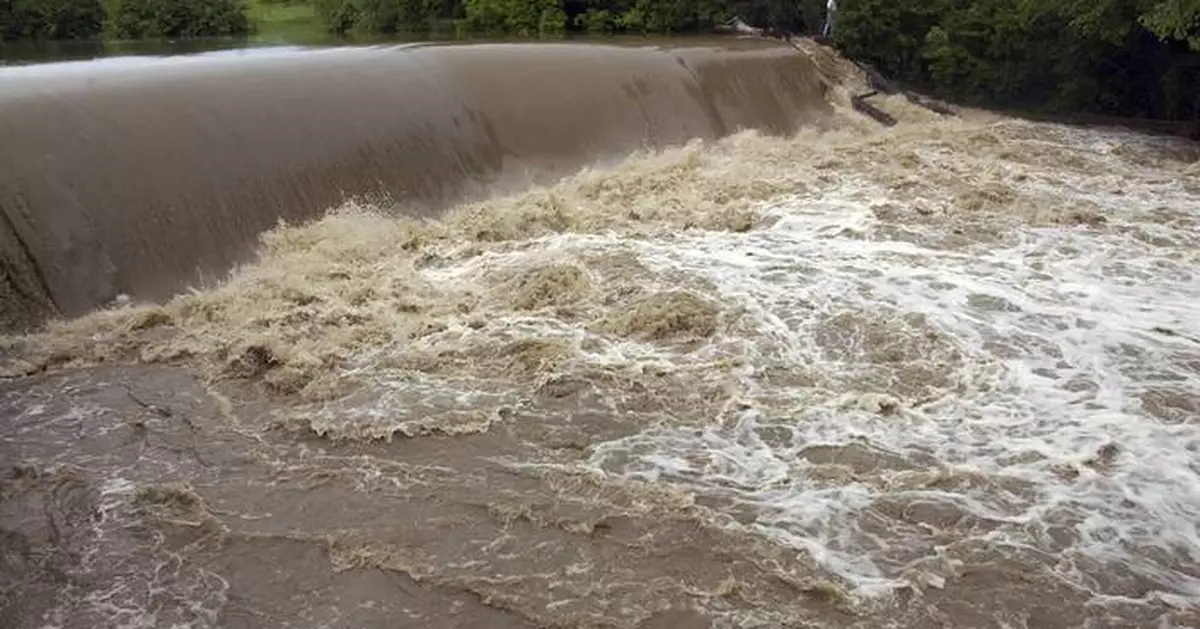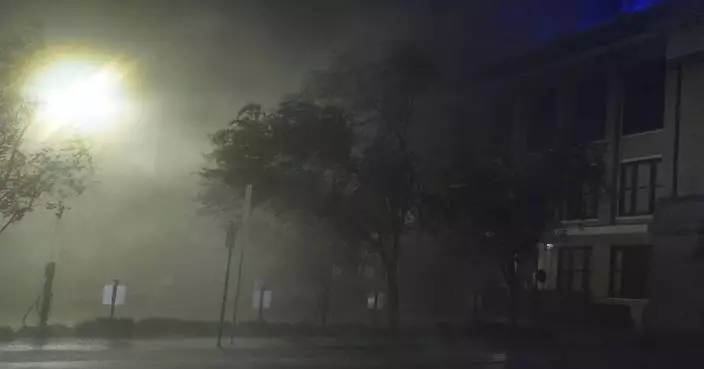Wisconsin is seeing more frequent dam failures in another sign that the storms blowing through the state are growing stronger.
Wisconsin recorded 34 dam failures from 2000 through 2023, the second-highest total for that period behind only South Carolina, the Wisconsin Policy Form said in a report released Thursday. More than 80% of the failures — 28, to be exact — happened since the start of 2018, and 18 of those happened since the start of 2020. None of the failures resulted in human deaths, the report found.
The state is home to more than 4,000 dams. Some are massive hydroelectric constructs while others are small earthen dams that create farm ponds. They're owned by a mix of companies, individuals, government and tribal entities, and utilities.
The U.S. Army Corps of Engineers' National Inventory of Dams lists 1,004 Wisconsin dams ranging in height from 6 feet (nearly 2 meters) to the 92-foot-tall (28-meter-tall) Flambeau dam on the Dairyland Reservoir in Rusk County.
The inventory classifies more than 200 dams as having high hazard potential, meaning failure would probably cause human deaths. Of the 34 dam failures in Wisconsin over the last 23 years, three had high hazard potential, one was a significant hazard potential, meaning a failure could cause economic loss, environmental damage and other problems, and 18 had low hazard potential, meaning failure wouldn't result in any loss of human life and would have low economic and environmental consequences. The remainder's hazard potential was undetermined.
Every state budget since 2009 has provided at least $4 million for dam safety work, according to the report. The funding has been enough to improve the state's most important dams, but “a changing climate — triggering more frequent and more severe extreme rain events — could pose new and greater tests to our dam infrastructure,” it warns.
The Wisconsin Policy Forum compiled the report using data collected by the Association of State Dam Safety Officials.

FILE - The Root River, swollen from record-level rain, flows over the Horlick Dam in Racine, Wis., on June 8, 2008. (AP Photo/Journal Times, Mark Hertzberg, File)
LOS ANGELES (AP) — Homebuyers in Seattle, Silicon Valley and the nation's other priciest markets are seeing more properties hit the market as mortgage rates finally start trending lower.
The number of newly listed homes for sale climbed 4.2% last month, according to data from Realtor.com. September's jump was the biggest annual increase since the peak of the spring homebuying season, and helped lift active listings 34% from a year earlier, according to Realtor.com.
A dearth of properties for sale is one reason keeping the median U.S. home sale price near record highs. The median U.S. home sale price hit an all-time high in June at $426,900.
Last month, the Federal Reserve announced its first interest rate cut in more than four years and signaled more cuts to come this year and through 2026.
The Fed doesn’t set mortgage rates, but its policy pivot cleared a path for mortgage rates to generally go lower. While mortgage rates rose this week economists still expect them to ease in coming months and that could lead to more listings.
“Sellers, especially those who are locked into a low rate, have been waiting for market conditions to change,” said Danielle Hale, chief economist at Realtor.com. “Now that we’re seeing mortgage rates down to their lowest levels in two years, there are signs of movement, with more sellers putting homes on the market, even in what’s typically a real estate shoulder season.”
Lower mortgage rates boost home shoppers’ purchasing power. They also can make selling a home more palatable for homeowners with mortgages that have a fixed rate below current prevailing rates.
The most expensive markets in the country drove much of the increase in newly listed homes last month. That includes metropolitan areas around Seattle, San Jose and Washington D.C., Realtor.com found.
Even so, homeowners who can afford to hold off on selling are likely waiting for rates to come down a lot further than they already have.
Consider, as of the second quarter, about 84% of all outstanding mortgages had a rate below 6% and 56% had a rate below 4%, according to Realtor.com.
Hale expects the average rate on a 30-year home loan to stay around 6% through the end of this year. A year ago, the average rate hit a 23-year high of 7.79%, according to mortgage buyer Freddie Mac.
September marked the 11th month in a row with an annual increase in active listings and the highest number of properties on the market since April 2020. The pickup in home listings is good news for the housing market, which has been in a sales slump for more than two years, partly due to a shortage of homes for sale.
Despite the September surge in new listings, the inventory of homes on the market remains below pre-pandemic levels. Active listings were down 23.2% last month compared to September 2019 and new listings were off 11.8%, according to Realtor.com.

FILE - A sign announcing a house for sale is displayed in Prospect Heights, Ill., on March 18, 2024. (AP Photo/Nam Y. Huh, File)











